So I said open-jaws on stopovers were illegal. But, I did share the exceptions, and I did tell you back tracking is possible… but I didn’t connect the dots, yet.
Recently I published the Complete Guide to United Routing Rules. I’m extremely proud of this post partly because it’s just good, and partly because a lot of the research is mine. United doesn’t [really] publish their routing rules, and I didn’t see anyone else researching the most powerful zones, connection limits, test stopovers and open-jaws and all that crap.
But determined to figure out how that United engine works, I’ve been testing things and keeping notes. And part of testing things is seeing how far you can push something before it doesn’t work.
Unfortunately one of the things that I have gone to bat saying it doesn’t work since late 2013, is that United no longer allows open-jaws on the stopover. The good news is that since then, United has published two things, for whatever reason. Both the number of connections allowed and the fact that open-jaws aren’t allowed along the way.
Actually, it says, “fare break surface sectors not permitted on the fare component.” Surface meaning travel overland, meaning an open-jaw.
However, on a few tickets it then adds, “embedded surface sectors permitted on the fare component from/to Hawaii.”
What are these few exceptions?
As I barely stated in the Complete Guide to United’s Routing Rules, open-jaws in Hawaii are allowed in the following regions: SE Asia, North Asia, Japan, Central Asia, Australia, Oceania.
So on your way to SE Asia, North Asia, Japan, Central Asia, Australia, or Oceania, you can open-jaw in Hawaii.
My guess is that this is supposed to be an opportunity to see multiple islands in Hawaii(?), but it ends up being anything.
For example, on your way to pretty much any of Asia and Oceania you could stopover in Hawaii. And you could fly into Honolulu and out of Kona.
You can actually fly in and out of any islands you want in any order:
- Hilo (ITO)
- Kona (KOA)
- Kahului (OGG)
- Honolulu (HNL)
- Kaua’i (LIH)
You can also stop on your way to Asia or your way back to Asia.
Breakin’ the Law
But one thing I noticed about this open-jaw is that it can continue flying from anywhere that’s a legal region. (I show what are and aren’t legal regions or legal routes in the post on United Routing Rules). And the main thing I’m going to emphasize here is that you can open-jaw anywhere in the USA and back tracking isn’t an issue.
Follow me for a second.
On the way to Tokyo (for example), you can fly from the New York to Hawaii. Then you could pick up the ticket to Tokyo not from another Hawaiian island but from New York.
You could get a oneway to Hawaii, before a regular roundtrip to Tokyo.
Make sense?
The booking for that (in Multiple Destination search) would look like:
- JFK – HNL
- EWR – NRT
- NRT – EWR
Unbelievably it lets me book this and it prices it out the same as a normal Japan ticket at 70,000 miles!
And it’s also worth mentioning that this could go both ways. You could do a oneway to Hawaii before a trip to Asia, or you could do a oneway back to Hawaii after a trip to Asia.
For example:
Cool so far?
Two Problems
I’m noticing that when using the multiple destination search it’s really hard to find saver awards to/from Hawaii.
Could I call in and book? Sure, the agent could book it. But be low drama and really try to do it online first. If you call, try to just feed the agent airport codes. Let them know ahead of time that you’ve got all the flights picked out. “I’m looking at JFK to HNL on July xx. It’s UA flight xxx. Then I’m looking at …”
The other problem is a rule I also left out of the complete guide, but it’s only really worth mentioning in this context. And I haven’t played around with this as much so I didn’t want my “official rules” stamp on it yet. But… I’m pretty sure.
You can not route through the point of origin on the way to your destination.
Perhaps in this case I should say (but would sound too obvious out of the context of this post): You can not stopover in your point of origin, on the way to your destination.
What does this mean?
It means that you could not technically do JFK to Hawaii, and then do JFK to Tokyo roundtrip. JFK would be your point of origin and then it would be your stopover (that you split with Hawaii).
This means that you would have to find a different city to go through. Maybe Chicago to Hawaii, then New York to Tokyo. Or maybe New York to Hawaii, and then Chicago to Tokyo (and then returning to New York of course). This is nice and all, but kind of a pain to book a separate ticket from New York to Chicago.
There’s always a loop-hole
For whatever reason, different airports in a city aren’t restricted by the rule I just mentioned.
Meaning?
This means that you could do JFK to Hawaii, and then EWR to Tokyo. In other words, you could use two different airports in New York, one to Hawaii and one for the trip to Tokyo.
In other words, you can add a oneway before or after a ticket, you just need to fly to/from Hawaii in/out-of a different airport. It could be New York to Hawaii and then Chicago to Tokyo. Or it could be JFK to Hawaii and EWR to Tokyo.
There’s no such thing as backtracking
Remember how in the post on the routing rules I say that what defines a legal route is the regions. United’s routing rules are not based on how many miles you’ve flown, not based on being “in route”, and not based on the distance of the open-jaw either.
In other words, you can continue your open-jaw from anywhere in a legal zone like the US. You could start in California to Hawaii and pick up your flight to Tokyo from New York. It does not matter.
Forget anything logical and think in regions, and North America is one big region.
San Fran to Hawaii and then Montreal to Tokyo? And I can return to San Fran when I’m done?
Yep. You can return anywhere because you get two open-jaws. It does not matter.
I have verified that it could be continued from Alaska!
As long as you stopover in Hawaii on the way to SE Asia, North Asia, Japan, Central Asia, Australia, or Oceania… you can open-jaw and continue from anywhere in the US. Or anywhere that’s a legal region, but it seems most useful for the US.
Conclusion
If you’re at all thinking about booking a trip like this, please check out my post on Cheapest Miles to Get To Hawaii.
This is an awesome chart that gives all the airline prices to Hawaii and which programs transfer to those airlines. If you have Amex, Citi, SPG, or Chase points you may be able to get a roundtrip to Hawaii for 20,000 – 35,000 miles. That could mean a oneway for half that to get you back home!
Let’s just say you have the 70,000 United miles to burn, and say 17,500 miles for a oneway back from Hawaii… For 87,500 miles you could have a roundtrip to Hawaii and then at a later date a roundtrip to Asia.
And remember, stopovers can be as long as you want. So these two trips could be 6 months apart, despite being one ticket.
So. Was this post helpful or useless hypothetical? Do you enjoy hearing about these tricks or are they overly complicated. Drop a comment below and thanks much for reading ya’ll!
Drew



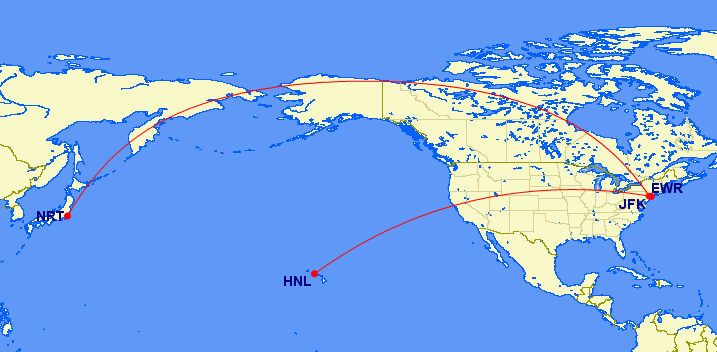
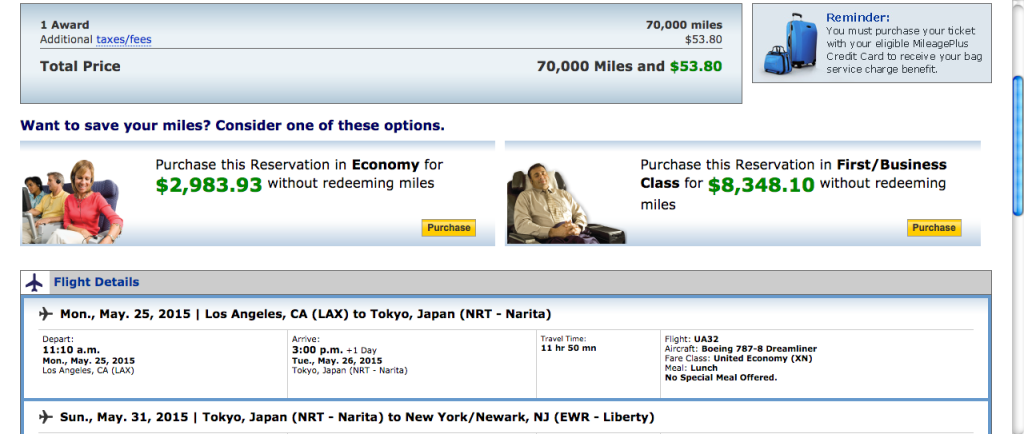

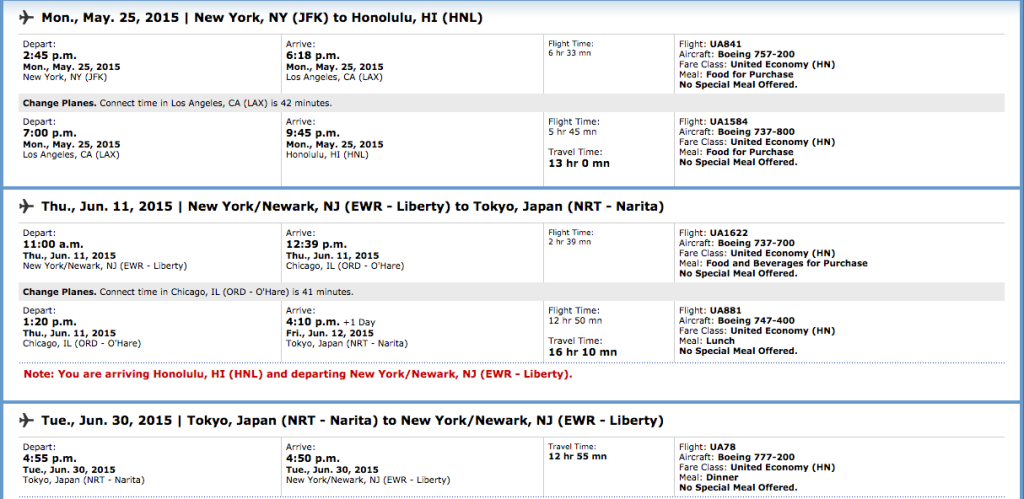
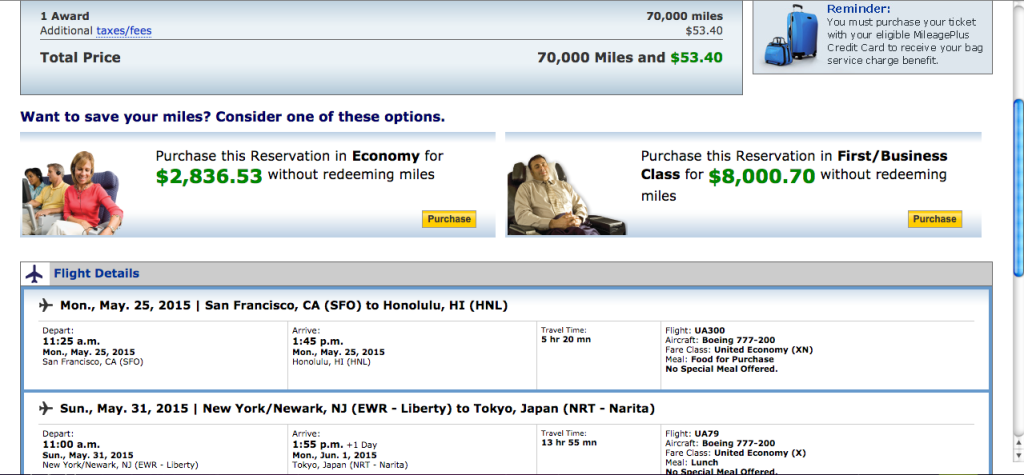
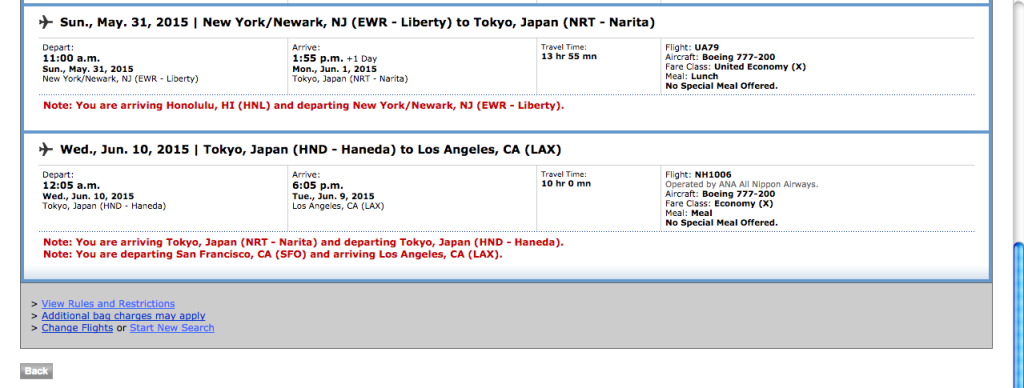
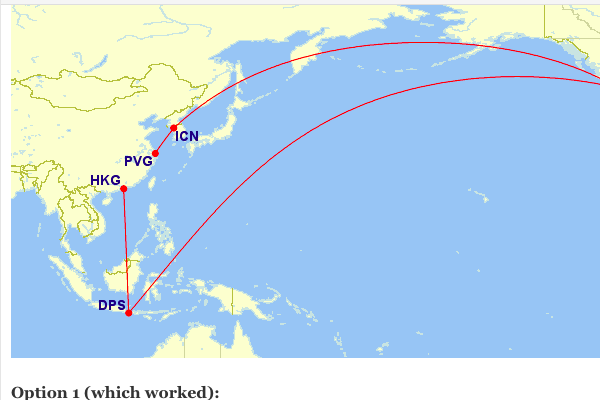

@travelisfree
interested in an example of a illegal OJ stopover combo, since i make use of both.. guess ill read through your guide
I don’t mean to be rude, but why would you want a post on illegal (not bookable) open-jaws? Rather, how are you using both?
Helpful and desirable. I’m glad you mentioned this explicitly, in fact, because I didn’t pick up on it in the last post. Good stuff to know!
Thanks Stephen!
Hey Drew,
I wanted to write to say I enjoyed your blog and congratulate your achievement.
I have been watching the CC blogs too and wondering about it’s future and appreciated your insights as one who
has been in it, and deeper longer than I. I had a couple confessions/questions to make re: meeting spends w/amazon and wondered if this was a way to address it without going on the WWW with ‘comments’?
Thanks,
Lancemahn
Thanks for the congratulations, I hope that means the achievement is around the corner. :-p
Super helpful post… thanks for the creative routes. Another fantastic addition to the site
Thanks Bryan!
wow, what a crazy find.
:-p Normal airline routing. LAX-HNL, NYC-NRT.
Excellent post. I am a fan of United awards because of their flexibility with stopovers and open jaws and have taken advantage of their rules on several trips to SE Asia.
I monkeyed around with your idea and was able to find the following flight path.
-Minneapolis to Honolulu
-Chicago to Sydney
-Bangkok to Chicago
You could then use budget airline AirAsia to get from Australia to Southeast Asia.
Perhaps I will be able to use your information when I book my next trip.
Or that Malaysia Airlines sale to get to Australia. Is that still going on? AirAsia does have cheap routes though. Also, there are a few cheap redemptions. It’s only 17k on United too.
Good luck, hope it’s helpful on the next trip then.
This is awesome advanced topic!!! Please keep posting…
If someone does not understand this they should just stick to one-ways.
Drop me an email as I have several ways to transit through your origin city as a stopover….
😉
Very cool. Love that you’re pushing the boundaries. I’ve spent a ton of time with United’s booking engine but you’re on a whole ‘nother level…
Please keep them coming.
Thanks. I’ll try!
As always, I love how your mind works. Keep doing what you are doing and share as much as you dare.
Thanks. I try to pace my sharing, but there’s always more. :-p
Hi Drew, Can you tell me if I’m breaking any rules….I’m in the planning stages of our anniversary trip next Nov. I guess I’m specifically worried about the SIN open jaw. Here it is on United:
Begin in HNL>GUM (stop)>CNS (destination)>SIN (open jaw)>TPA (home).
Do you have an opinion on this?
It looks like you have three stops. An open-jaw doesn’t create a stop, it’s added to a stop… so to speak.
Hope that helps.
This is a very interesting post! I really enjoy reading your blog; please, keep them coming!
Thanks John
Fantastic job!
Thanks Andy
Thanks. Great post! Have you done any writing on United domestic routing rules for award travel? It seems like you can route through just about anywhere as long as no connections are more than 4 hours (except last in-first out overnights) and you don’t go through an airport more than once. In addition, as long as your origin and destination are 700 miles or less apart then it seems a one-way is 10k no matter how far your route takes you (e.g. SJC-DEN-ORD-GRR-EWR-SFO can price at 10k). What would happen if you decided not to fly a segment at the end of a route (e.g. EWR-SFO in this case)? 10k trans-con one-way?
If you can get it to book at 10k… I guess you’d save a couple-k. But I tend to not route things just for the layover. I’m generally too tired. :-p So I haven’t messed with it too much.
Drew,
Thanks for this’ you’re amazing!
I live in hawaii… What would be some ways for me to effectively use this?
This is great info which I didn’t know before – really opens up some possibilities! Thanks!!
Hey Drew,
Thanks a lot for putting up all of this information! I’m relatively new and love learning about all of it. I’ve spent the better part of the day learning about united’s award rules from your great posts. I am actually trying to do this exact route that you left as a puzzle at the end of this post: http://travelisfree.com/2014/04/08/uniteds-stopover-and-routing-rules/#csp_form –
It would be amazing if you could show me how you did it because I am really struggling to figure out how to split these routes up into two flights
Drew,
Loved your example of using Hawaii. How could you maximize this opportunity? I want to plan a trip to Hawaii next summer which shows availability and I currently live in LA. How would I make this open jaw work if I wanted to visit Japan or Asia down the road? Just from playing around with it looks like you can parlay a HNL-LAX trip into a Europe or Canada (or South America) trip down the road. Appreciate your help!
I wish the stopover worked on the way back from Asia/Australia… I didn’t realize we could do that…